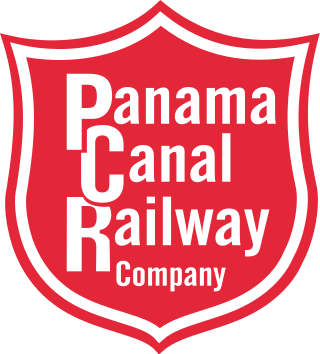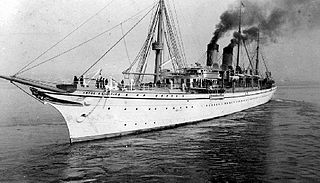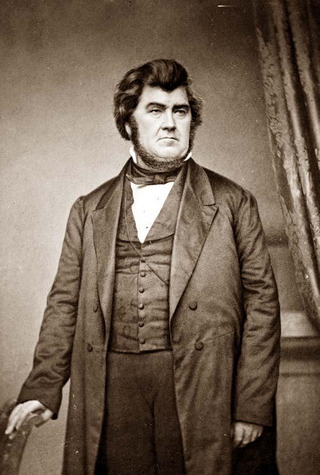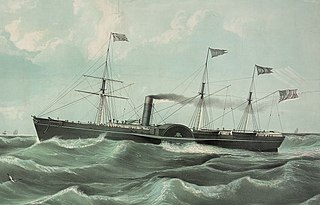
The Panama Canal Railway is a railway line linking the Atlantic Ocean to the Pacific Ocean in Central America. The route stretches 47.6 miles (76.6 km) across the Isthmus of Panama from Colón (Atlantic) to Balboa. Because of the difficult physical conditions of the route and state of technology, the construction was renowned as an international engineering achievement, one that cost US$8 million and the lives of an estimated 5,000 to 10,000 workers. Opened in 1855, the railway preceded the Panama Canal by half a century; the railway was vital in assisting the construction of the canal in the early 1900s. With the opening of the canal, the railroad's route was changed as a result of the creation of Gatun Lake, which flooded part of the original route. Following World War II, the railroad's importance declined and much of it fell into a state of neglect until 1998, when a project to rebuild the railroad to haul intermodal traffic began; the new railroad opened in 2001.

American President Lines, LLC, is an American container shipping company that is a subsidiary of French shipping company CMA CGM. It operates an all-container ship fleet, including nine U.S. flagged container vessels.

Charles Morgan was an American railroad and shipping magnate. He played a leading role in the development of transportation and commerce in the Southern United States through the mid- to late-19th century.

Star of the West was an American merchant steamship that was launched in 1852 and scuttled by Confederate forces in 1863. In January 1861, the ship was hired by the government of the United States to transport military supplies and reinforcements to the U.S. military garrison of Fort Sumter. A battery on Morris Island, South Carolina handled by cadets from the South Carolina Military Academy fired upon the ship, considered by some scholars to have been effectively the first shots fired in the American Civil War.

The Pacific Mail Steamship Company was founded April 18, 1848, as a joint stock company under the laws of the State of New York by a group of New York City merchants. Incorporators included William H. Aspinwall, Edwin Bartlett, Henry Chauncey, Mr. Alsop, G.G. Howland and S.S. Howland.

Commander William Lewis Herndon was one of the United States Navy's outstanding explorers and seamen. In 1851 he led a United States expedition to the Valley of the Amazon, and prepared a report published in 1854 and distributed widely as Exploration of the Valley of the Amazon.

Queen of the Pacific is a name or nickname of ships and places associated with the Pacific Ocean, the largest of Earth's oceans.

SS Pacific was a wooden sidewheel steamer built in 1850 most notable for its sinking in 1875 as a result of a collision southwest of Cape Flattery, Washington. Pacific had an estimated 275 passengers and crew aboard when she sank. Only two survived. Among the casualties were several notable figures, including the vessel's captain at the time of the disaster, Jefferson Davis Howell (1846–1875), the brother-in-law of former Confederate President Jefferson Davis. The sinking of Pacific killed more people than any other marine disaster on the West Coast at the time.

William Henry Aspinwall was a prominent American businessman who was a partner in the merchant firm of Howland & Aspinwall and was a co-founder of both the Pacific Mail Steamship Company and Panama Canal Railway companies which revolutionized the migration of goods and people to the Western coast of the United States.

Active was a survey ship that served in the United States Coast Survey, a predecessor of the United States Coast and Geodetic Survey, from 1852 to 1861. Active served on the U.S. West Coast. She conducted the Coast Survey's first reconnaissance from San Francisco, California, to San Diego, California, in 1852. Active sometimes stepped outside her normal Coast Survey duties to support U.S. military operations, serving as a troop transport and dispatch boat during various wars with Native Americans and during the San Juan Islands "Pig War" with the United Kingdom in 1859. She also rushed Union troops to Los Angeles, California, in 1861 during the early stages of the American Civil War.

George Law was an American entrepreneur and failed presidential candidate for the American Party in the 1856 United States presidential election from New York.
John Edward Hollenbeck was an American businessman and investor who was involved in the 19th-century development of Nicaragua and the city of Los Angeles, California.

SS California was one of the first steamships to steam in the Pacific Ocean and the first steamship to travel from Central America to North America. She was built for the Pacific Mail Steamship Company which was founded April 18, 1848 as a joint stock company in the State of New York by a group of New York City merchants: William H. Aspinwall, Edwin Bartlett, Henry Chauncey, Mr. Alsop, G.G. Howland and S.S. Howland. She was the first of three steamboats specified in a government mail contract to provide mail, passenger, and freight service from Panama to and from San Francisco and Oregon.

The California Steam Navigation Company was formed in 1854 to consolidate competing steamship companies in the San Francisco Bay Area and on the Sacramento and San Joaquin Rivers. It was successful in this effort and established a profitable near-monopoly which it maintained by buying out or bankrupting new competitors. In response to the Fraser Canyon gold rush and economic growth in the Pacific Northwest, the company expanded to ocean routes from San Francisco north to British Columbia. Similarly, as California's economy grew, the company offered service from San Francisco south to San Pedro and San Diego. It exited these markets in 1867 when competition drove prices to unprofitable levels. While the California Steam Navigation Company was successful throughout its life in suppressing steamboat competition on its core Bay Area and river routes, it could not control the rise of railroads. These new competitors reduced the company's revenue and profit. Finally, in 1871, the company's assets were purchased by the California Pacific Railroad, and the corporation was dissolved.
Gardiner Greene Howland was an American businessman who was a founding partner in the merchant firm of Howland & Aspinwall and a co-founder of the Pacific Mail Steamship Company.

Orizaba was one of the first ocean-going steamships in commercial service on the west coast of North America and one of the last side-wheelers in regular use. Her colorful career spanned the business intrigues of Cornelius Vanderbilt, civil unrest in Mexico and Nicaragua, and the Fraser River gold rush. The ship was particularly important to Southern California ports, where she called for roughly the last 20 years of her service.
Samuel Shaw Howland was an American businessman who was a founding partner in the merchant firm of Howland & Aspinwall and an incorporator of the Pacific Mail Steamship Company.

The S.S. Golden Gate was a mail and passenger steamer that operated between San Francisco and Panama City from 1851 to 1862. On its last voyage from San Francisco it caught fire and was destroyed with the loss of 204 lives off Manzanillo, Colima, Mexico. The ship was carrying $1,400,000 in gold coins for Wells Fargo, as well as large amounts of gold and coins for the passengers. Much of this was retrieved, but amateurs continue to search for gold with metal detectors on what is now called the Playa de Oro.
Orus was a wooden side-wheel steamship built in 1842. After a short commercial career connecting ports in New Jersey to lower Manhattan, she was employed in some of the earliest attempts to develop transcontinental shipping routes across Panama and later, across Nicaragua. She was wrecked in 1850 attempting to ascend the San Juan River in Nicaragua.

Atlantic was a wooden-hulled, side-wheel steamship launched in 1849. She was conceived as a part of an American fleet which would break the monopoly that European steamers, notably the Cunard Line, had on trans-Atlantic trade. She was the most successful of the Collins Line ships, and one of the most luxurious vessels of her day, but the company went bankrupt in 1858.

















